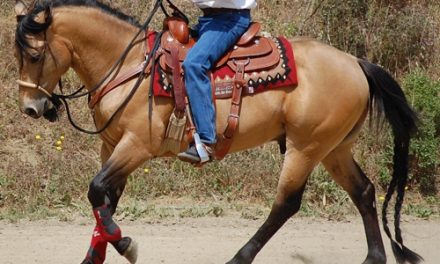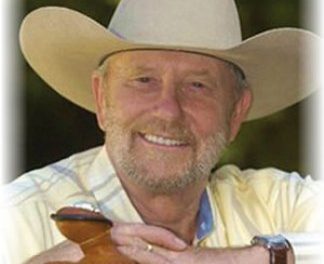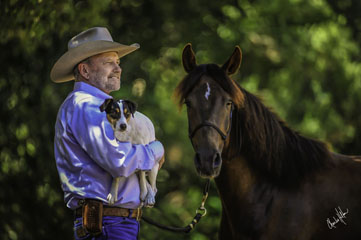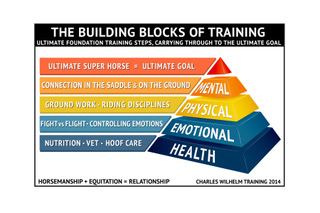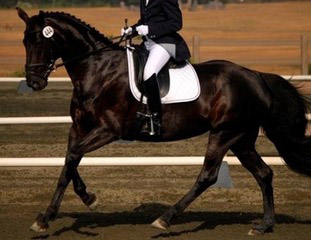
We often speak about making sure our horse is collected. Collection is important for every rider whether you trail ride or you are serious about showing. So, what is collection and why is it so vital for every rider?
Speaking in strictly physical terms, collection occurs when the horse can compress his body. He brings his rear up under him toward the front and his body and withers are raised. His hind legs are extended up under his body, while his croup is dropped. The horse that is collected is driving himself mainly with his hindquarters and not just with his legs. He will have a nice rainbow arc in his neck and will be on the bit with his face perpendicular to the ground.
Mentally and emotionally, collection occurs when the horse is truly listening to you and is engaged. He understands all your cues and can coordinate all the key parts of his body into a very powerful, balanced and fluid movement.
What you gain with a collected horse is better performance in every gait, with far greater impulsion. Collection allows you to excel at leg yields, spins, turnarounds, flying lead changes, collected trots and canters, just a better performance no matter what you are asking the horse to do. Collection means the horse is using himself 100% and as the rider you are 100% in harmony with your horse.
All the foundation training that we do with our horse leads toward collection. We must have control over all the major body parts: jaw, pole, neck, shoulders, rib cage and hindquarters. We must have acceptance of the bit, and not at ten pounds of pressure either. Ideally you are riding a horse with the weight of the rein only on the bit. If the horse is heavier that that on the bit, he will be heavy on the forehand, and thus it will be impossible for you to get true collection.
As a trail rider, you also need collection. Going up and down hills efficiently requires collection. The extra impulsion you gain from your horse driving from the rear means you can go further and that your horse uses his energy more efficiently. For example, this means a better heart rate for you horse, which is critical for endurance riding. A horse that can be collected is a fit horse. The body has been conditioned physically the top line is strong and the horse is balanced. Balanced from a profile point of view—meaning there is a straight line from the front end to the back — not tilted, and with equal weight on each end.
We gain collection through a series of exercises that show what we want. These include haunches in, shoulders in and leg yields. Walking pirouettes teach a horse to turn on the haunches, teach a horse to shift its weight back to its hindquarters. The horse must really know the “go forward” cue. He must also know what all your leg cues mean. Then, the rein simply acts as the final method of communication. Think of the bit kind of like the gate of a dam. We can let so much energy go out through the nose, or else capture it and transfer that energy up through the withers.
I had a show horse come to the ranch for training that was so heavy on the forehand that it was impossible to get her to pick up a correct lead. As a result, she also could not do a flying lead change. The horse was certainly not what we would call a problem horse by any means. She was about nine years old, a super cooperative mare, with no emotional issues. She had been professionally trained years before and then spent a long time being worked by amateur competitors. Simply put, her training had really degraded over the years, as her riders had not maintained the performance standards.
With this mare I went back to the basics. I used basic foundation exercises to get control of all of her body parts and to get her to be responsive to aids. I got her collected and paying attention to what I was asking of her. I ended with a horse that was very light and supple but it takes time and patience to make that kind of change. When I started working her, she had big shoulders, a puny hind end, no top line and her neck was inverted (muscles on the bottom and skinny of top). In about three to four months with a good diet, all the great gymnastic exercises we do as part of the foundation training regimen, plus conditioning training, I finished with a horse that easily learned to pick up a correct lead, both right and left, and to do exceptional flying lead changes.
While there is no quick fix to getting a horse collected, it is critical that collection be one of your goals with your horse. Collection comes from thorough training on all three aspects of your horse: emotional (the horse’s fear level which translates into its flight instinct), mental (what the horse is thinking) and physical (where and how the horse moves). Collection results from your consistency and commitment to constantly meeting and raising your expectations for performance for both your horse and yourself as a rider and trainer. We use exercises that teach the horse to bring his emotional level down, focus his mind on what we ask, and perform in an efficient physical manner. Foundation training is the methodical step-by-step process of teaching your horse to respond consistently to your cues and expectations. This means repetition and lots of it. It is setting incremental goals and raising standards. It is using the horse’s natural aversion to pressure effectively by releasing at just the right moment to reward the correct response. Collection is achieved through solid, systematic foundation training and that is something that everyone really can do with their horse.

